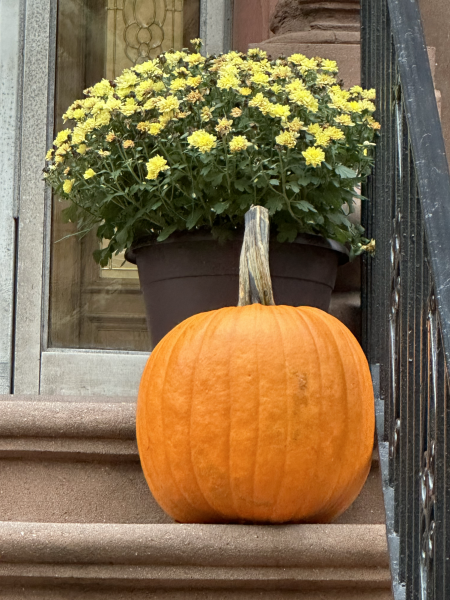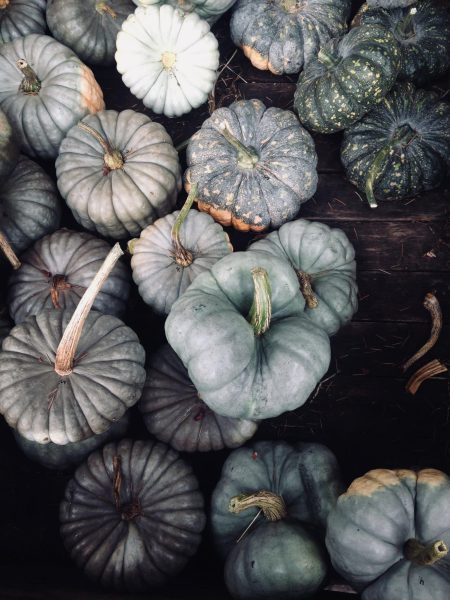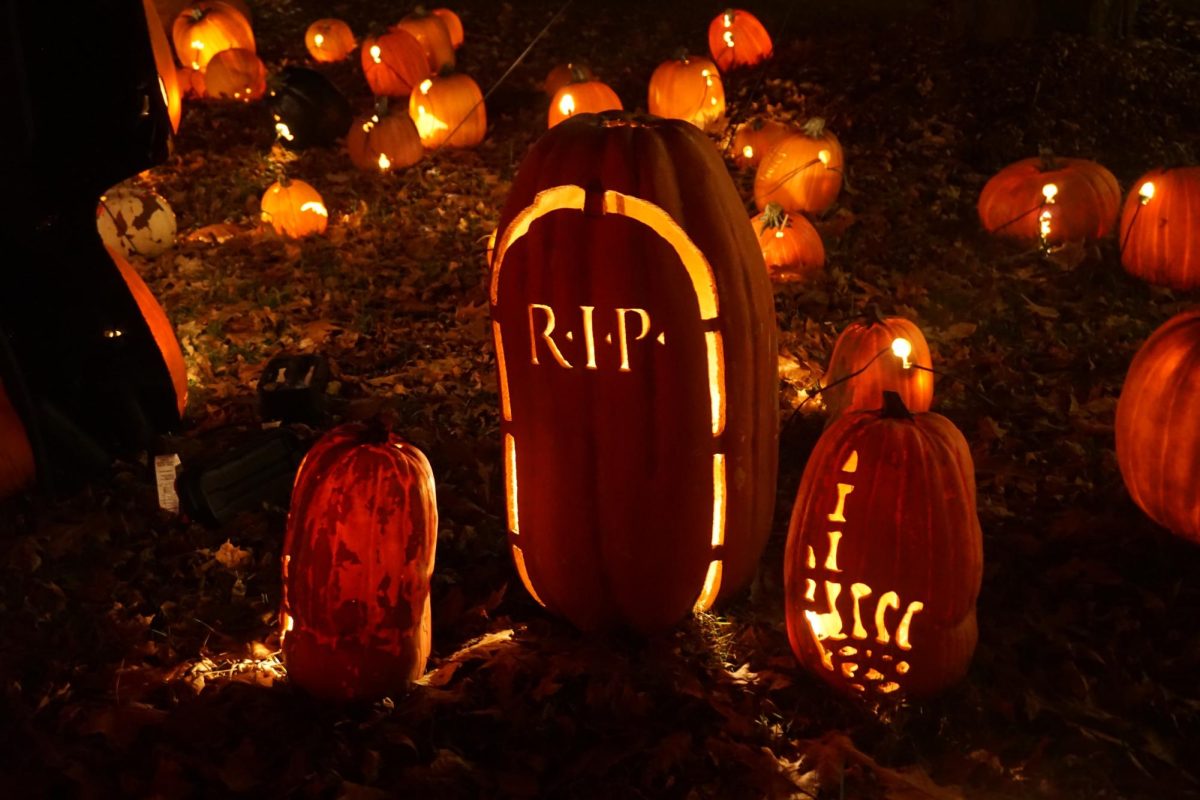Pumpkins are undeniably a staple of American culture. With Halloween approaching, pumpkins are becoming increasingly unavoidable. Every time that I walk into my local CVS or glance at a storefront, I see something pumpkin. But I never thought to question why and how this squash became so popular.
Until now.
The importance of pumpkins in North America can be traced back to before any European set foot on the continent. “There is a long history of pumpkins being associated with wild nature and natural abundance,” said Cindy Otts, author of Pumpkin: The Curious History of an American Icon, when I asked her why pumpkins became so popular.
Pumpkins came in an abundance and were easy to store and grow. “It is the oldest domesticated plant in the Americas. By 1200 C.E., it had domesticated all across North America,” said Otts. This made pumpkins the perfect plant to grow.
With the 19th century came the rise of industrial agriculture. Suddenly, pumpkins’ copious nature did not matter, as any plant could now be mass produced.
Urbanization emerged as the savior of pumpkins, despite being a consequence of industrialization. As people flocked to cities, their connection to nature began to wane. Seeking a cure, many turned to pumpkins due to their preexisting link to nature.
At the same time, a large influx of Irish immigrants were arriving in America, and with them came the story of Stingy Jack.
The legend of Stingy Jack derives from an old Celtic tradition called Samhain, which has evolved into Halloween. In it, Jack traps the Devil twice in order to force him to never claim his soul. The Devil eventually agreed to leave Jack alone and to never claim his soul in exchange for freedom.
After Stingy Jack died, God would not let him into heaven (because of his nefarious actions) and the Devil could not claim his soul. The legend ends with Jack alone with only burning coal in a carved out turnip. Thus, the tradition of carving and lighting turnips was born. Since turnips are not native to the Americas people used a different vegetable – the pumpkin.
During Samhain, Celtics would put out treats and light bonfires to protect themselves from spirits. Samhain and pumpkins’ shared connection to nature was a driving reason behind the decision to choose pumpkins as a replacement for turnips.

It was through these traditions that the Jack O’ Lantern became what it is in the present – a combination of an old tradition and pre-existing ideals. “The pumpkin became the face of Halloween because of its head-like shape and its old associations with natural abundance and wild nature. Later, in the twentieth century, the holiday became much more geared to little kids and trick or treating, but in the 19th century, young adults celebrated Halloween with parlor games,” said Otts.
Farmers played a pivotal role in transforming the pumpkin from plant into a symbol. According to Otts, “It helped to rejuvenate these small family farmers. In the 1970s especially, these farmers figured out how to survive by creating pick-your-own farms and festivals.” They used the newfound appeal of pumpkins as a pathway to profit by opening pumpkin patches and hosting pumpkin-themed festivals at their farms.
Outside of farms, most pumpkin-centered activities in New York City take place at parks. At the Bronx Park, there are Pumpkin Nights at the Bronx Zoo and Spooky Garden Nights at the New York Botanical Garden’s. Recently, Brooklyn Bridge Parks hosted its own Harvest Festival.
While pumpkin carving these days is more for entertainment purposes than religious or practical reasons, American holidays, particularly Halloween and Thanksgiving, share one important tradition: pumpkin based foods.
Despite being the most iconic, pumpkin pie is barely the tip of the pumpkin shaped iceberg. There are other classic desserts, such as pumpkin cinnamon rolls and pumpkin seed toffee. It’s also a common ingredient in many soups. Then, there are also the more creative dishes that are, ironically, more rooted in tradition than pumpkin pie like pumpkin gnocchi and pumpkin curry.
“They served it in the colonial era as a savory dish,” said Otts. The change to a sweet happened in the 19th century, as the pumpkin became increasingly associated with cozy and homely American ideals.
Each October, Mira Bieber ’25 adorns her hallway with festive decorations. “The four of us, my brother, my neighbor, her brother, and I have lived on the same floor our whole lives. Our parents started the tradition to get us into the Halloween tradition and once we were old enough we took on the task of decorating and carving pumpkins,” she said. “It reminds me of very fond memories that I have, and it connects me to my neighbors and my mom.”
Mira’s methodology for carving pumpkins is quite rudimentary, with her only tools being a straight-edge knife and spoon. “My neighbor’s brother, Jacob, usually makes really elaborate carvings of landscapes and my brother has had some funny designs. I make faces,” said Bieber.

For those who aim to make their Jack O’ Lanterns more like Jacob’s, here are a few useful tips.
1. Pick a good pumpkin.
Too often I spot rotting pumpkins placed on doorsteps weeks before Halloween. I don’t want to see that. No one wants to see that. So please, pick healthy and long lasting pumpkins.
Fresh pumpkins are vibrant – the green should be vividly green and the orange should be vividly orange. Stems should also be thick, sturdy, and firmly attached to the pumpkin. Double check that there are no bruises or soft spots on the skin.
2. Do not cut a hole at the top of your pumpkin.
I know what you’re thinking. How would I get a candle in the pumpkin? How would I scoop all of the guts out? Are you kidding? Well, there’s a pretty simple fix: making a hole at the bottom of the pumpkin.
A hole at the bottom has the same functionality as a hole at the top but there’s also the added benefit of preserving the structural integrity of the pumpkin. Consequently, your pumpkin will have a much lower chance of collapsing in on itself.
3. Draft, revise, finalize.
When drawing or writing it’s essential to draft. Pumpkin carving is just another form of creative expression so you still have to draft.
I’ve found that the best strategy is to draw your design on paper. If you mess up, simply erase and start over. Draw it the same size as you plan to on the pumpkin. That way, you can tape the paper to the pumpkin and work from there.
Don’t just start cutting through the paper with some large knife. Use needles or a fork to poke holes through your drawing. If you mess up, no one will notice because the holes are so small.
4. Be creative.
The classic triangle eyes and nose half oval mouth with a handful of rectangular teeth is the epitome of overused. Use your mind – the pumpkin is your canvas, and it has no limit.
No, I’m serious, there is literally no limit. Selective breeding means that pumpkins come in all shapes, sizes, and colors these days.
Whether a pumpkin is 2,749 pounds – the weight of the heaviest pumpkin in the world – or the average 10 pounds, you can still create the perfect Jack O Lantern. A pumpkin’s physical features may change over time but its significance to America never will.
The importance of pumpkins in North America can be traced back to before any European set foot on the continent. “There is a long history of pumpkins being associated with nature,” said Cindy Otts, author of Pumpkin: The Curious History of an American Icon, when I asked her why pumpkins became so popular.

